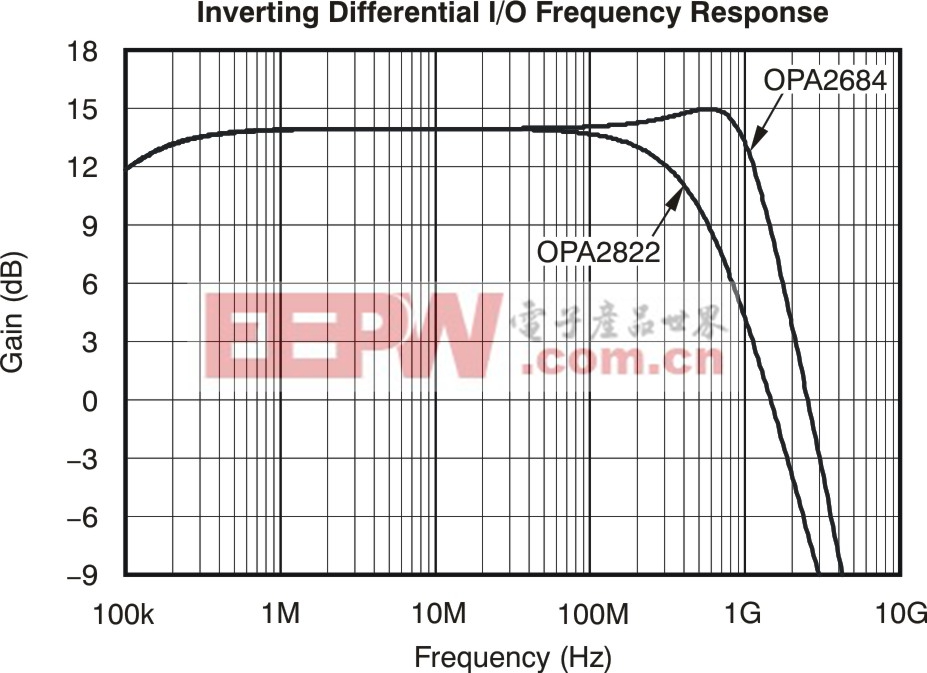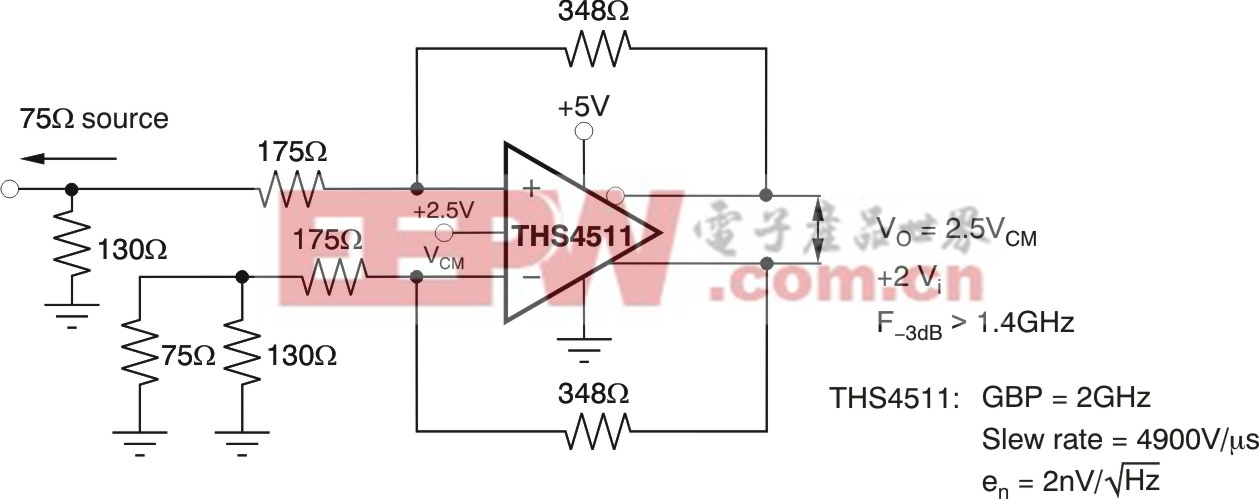使用宽带电压和电流反馈运算放大器时的应用基础
Figure 14illustrates a simulation of this low-power inverting input differential I/O example where a dual VFB device, the OPA2822, is also shown.

(Click to Enlarge Image)
Figure 14. Inverting input differential I/O frequency response.
That part is a unity gain stable, 200 MHz GBP device so this noise gain of six configuration shows about 35 MHz bandwidth versus >150 MHz bandwidth for the OPA2684.
Fully differential amplifiers are essentially VFB devices with an added output common-mode control loop. Instead of an internal differential to single-ended conversion, such as standard op amps require, these devices continue the signal path to the output differentially. All of the applications discussed in Part 1 for VFB devices would also be suitable for an FDA device adapted to a differential signal path. However, there are at least two types of application circuits where the FDA provides a compelling solution as compared to standard VFB implementations.
Application B
A dc-coupled, single-ended input to differential output with output common-mode control can best be implemented with an FDA device. One of the key considerations in this design is to match the feedback divider ratios on each side of the FDA circuit, including the signal source impedance. It is also important to understand that the common-mode control loop is level-shifted from the input to the output by setting up a common-mode current in the feedback paths. Therefore, the source must be able to sink or source a portion of this dc common-mode current. (SeeReference 2for a discussion of basic FDA operation and applications.)
Figure 15shows an example circuit using the THS4511, a very wideband, single, 5V-supply FDA that includes ground in its input common-mode range.

(Click to Enlarge Image)
Figure 15. Single-ended input to differential output using the THS4511.
This feature makes the THS4511 particularly useful for converting a single-ended, ground-referenced signal that swings only above ground into a differential output around a common-mode voltage.

加入微信
获取电子行业最新资讯
搜索微信公众号:EEPW
或用微信扫描左侧二维码